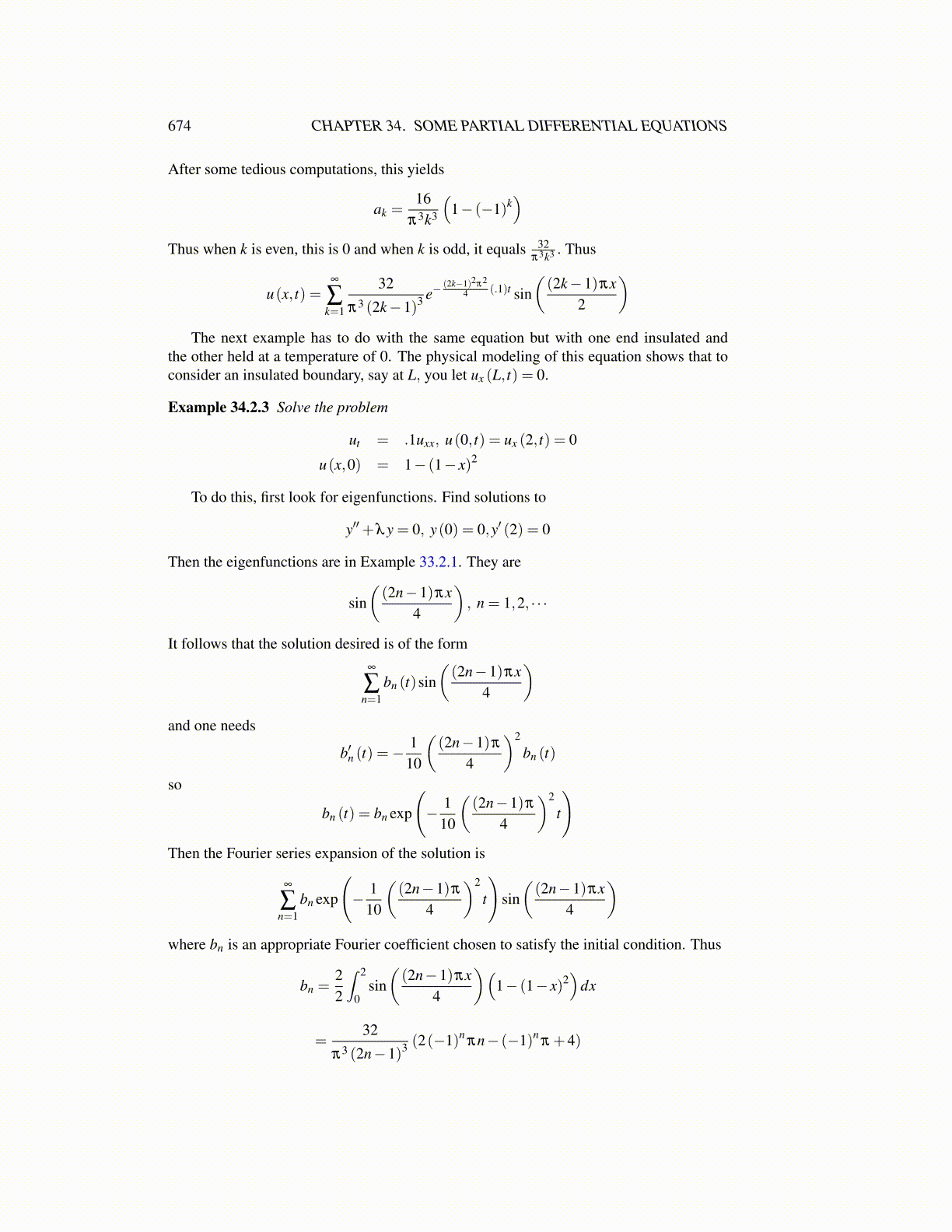
674 CHAPTER 34. SOME PARTIAL DIFFERENTIAL EQUATIONS
After some tedious computations, this yields
ak =16
π3k3
(1− (−1)k
)Thus when k is even, this is 0 and when k is odd, it equals 32
π3k3 . Thus
u(x, t) =∞
∑k=1
32
π3 (2k−1)3 e−(2k−1)2π2
4 (.1)t sin((2k−1)πx
2
)The next example has to do with the same equation but with one end insulated and
the other held at a temperature of 0. The physical modeling of this equation shows that toconsider an insulated boundary, say at L, you let ux (L, t) = 0.
Example 34.2.3 Solve the problem
ut = .1uxx, u(0, t) = ux (2, t) = 0
u(x,0) = 1− (1− x)2
To do this, first look for eigenfunctions. Find solutions to
y′′+λy = 0, y(0) = 0,y′ (2) = 0
Then the eigenfunctions are in Example 33.2.1. They are
sin((2n−1)πx
4
), n = 1,2, · · ·
It follows that the solution desired is of the form∞
∑n=1
bn (t)sin((2n−1)πx
4
)and one needs
b′n (t) =−1
10
((2n−1)π
4
)2
bn (t)
so
bn (t) = bn exp
(− 1
10
((2n−1)π
4
)2
t
)Then the Fourier series expansion of the solution is
∞
∑n=1
bn exp
(− 1
10
((2n−1)π
4
)2
t
)sin((2n−1)πx
4
)where bn is an appropriate Fourier coefficient chosen to satisfy the initial condition. Thus
bn =22
∫ 2
0sin((2n−1)πx
4
)(1− (1− x)2
)dx
=32
π3 (2n−1)3 (2(−1)nπn− (−1)n
π +4)